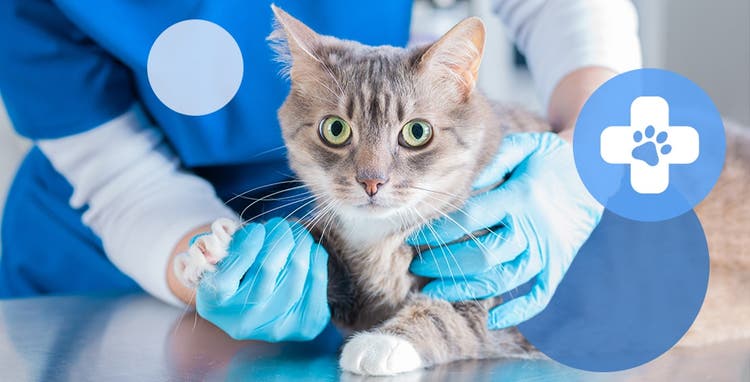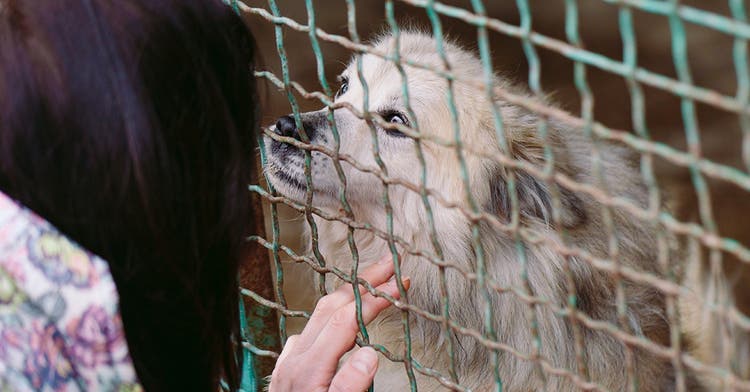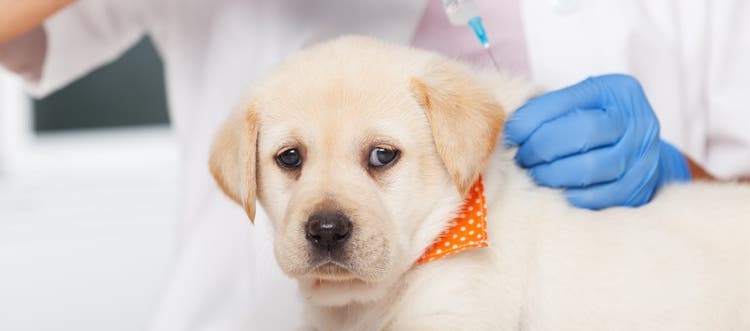What pet owners need to know about rabies prevention
Rabies is a deadly disease that can affect any mammal, including dogs, cats and people1-3 — so it’s important for owners to stay knowledgeable and vigilant about preventive measures, clinical signs and vaccines.
How can rabies affect domestic pets and their owners? How is the disease transmitted? And what measures of prevention help stop the spread? Let’s find out.
What Is Rabies?
This viral disease is considered a zoonosis risk, or a type of disease spread from animals to humans.4 It is most often transmitted through the bite of a rabid animal5 and infects the central nervous system of mammals, ultimately causing disease in the brain.6
Once outward signs of the disease appear, rabies is fatal. Although it is uncommon, rabies can be transmitted through saliva from a rabid animal that comes in contact with an open cut on the skin or the eyes, nose or mouth.6 Only mammals can get rabies, and it’s most commonly found in the U.S. in skunks, raccoons, bats, coyotes and foxes.1,6 Domestic dogs and cats are often at risk of infection, so all pet owners should be aware of the disease.2,3
How Does a Dog Get Rabies?
Most pets get rabies from having contact with infected wildlife.1 Dogs left outside in a yard (even if the yard is fenced) may be exposed to or attacked by an infected animal, sometimes without the owner’s knowledge.
In some cases, it may be obvious when your dog has had an encounter with wildlife, like a noticeable injury or bite marks. In others, the signs might be more subtle. For example, people may not recognize a bat scratch or bite, which can be very small and still spread rabies. Since many jurisdictions legally require dogs to be vaccinated for rabies, dogs make up only around 1% of rabid animals reported each year in the United States.1 Dogs may be more commonly associated with rabies exposure as they may be outside more and have direct contact with wildlife, but any animal exposed is at risk.
Can Cats Get Rabies?
Yes; cats can be infected with rabies.3 In recent years, cats have become the most common domestic animal infected with the disease.6 Many cat owners don’t vaccinate their cats at the same rate as dog owners, and cats can still be exposed to rabid wildlife. Rarely, wildlife (such as bats or smaller mammals) can get into the house, exposing a strictly indoor cat to rabies. Even if your cats are indoors, rabies precautions are still worth knowing.
What Are the Symptoms of Rabies in Cats and in Dogs?
The time between exposure and appearance of symptoms is called the incubation period, which can last for weeks to months. The first signs of rabies may be nonspecific, such as lethargy, fever, vomiting, increased anxiety and decreased appetite.2,3,7
Symptoms can progress within days to fearfulness, aggression, excessive drooling, difficulty swallowing, staggering, paralysis, seizures or uncharacteristic affection.2,3,7 If you think your pet has been bitten by an infected animal, consult your vet immediately and report the incident to local animal control authorities.
Are There Treatment Options for Rabies?
There is no treatment for rabies once clinical signs are apparent. However, rabies is easily preventable with safe and effective vaccines for humans and animals. If contracted, post-infection responses can escalate quickly, so prevention is extremely important.
If an animal becomes infected with rabies, the disease is most often fatal. This is why vaccines are so crucial to combat potential infections. If a pet doesn’t show outward signs, the only way to know for sure if an animal has rabies is to perform laboratory testing on the animal after death.8 Even if your pet has a current vaccination, they should be revaccinated immediately if infected.8 They should also be monitored closely and carefully by their owners and observed for a period of time specified by state law or local ordinance. Animals with expired vaccinations will be evaluated on a case-by-case basis. Animals never vaccinated may be placed in strict isolation for six months or euthanized.6,8
What Are Preventive Measures to Take against Rabies?
You can take several steps to protect your pet and your household from rabies, including:
- Comply with mandatory vaccine laws in your area. Check with your vet on how often your pet should be vaccinated and be sure to adhere to their recommended frequency.6,9
- Don’t let your outdoor pets roam around unsupervised. Keep cats inside when possible.6,9
- Don’t leave exposed garbage, pet food or scraps of human food outside, as it might attract wild or stray animals to your yard.6
- Do not interact with wild animals or try to adopt them into your home, whether they are acting normal or strange. If you see an animal around your home or neighborhood — even if it’s a stray dog or feral cat — do not try to intervene or interact. Call your local city or county animal control department instead. Remember: Wild animals should never be kept as pets, and it is illegal in some areas to do so.6
- Bat-proof your home and other structures to prevent bats from nesting or accidentally interacting with pets or people.6 The best time for this is in the spring before bats roost or in the fall after they’ve vacated roosting areas. Bats can sneak into holes as small as half an inch, so locate all potential entrances in your home. This could include areas where joined materials are damaged, vents with loose screening, the roof or the chimney. Seal entrances with window screening, hardwire cloth, expanding foam insulation or caulking compound.
- Dogs are still a significant source of rabies outside of the U.S., so travelers should be aware of this risk and seek medical advice about vaccination prior to traveling.6
Over the last 100 years, efforts to curb rabies in the United States have made a huge difference. More than 90% of all animal cases reported annually to the CDC now occur in wildlife, whereas before 1960, the majority were in domestic animals.1 In some states, wild animals are even vaccinated through a special type of food to help prevent the spread.
Even with countrywide efforts, it’s critical that individual pet owners take responsibility for their own household and take preventive measures with their domestic animals. This helps keep communities and pets happy, healthy and rabies-free.
Resources
- “Animals and Rabies” (January 6, 2022). Centers for Disease Control and Prevention (CDC). https://www.cdc.gov/rabies/animals/.
- “Rabies in Dogs” (October 2022). Merck Veterinary Manual. https://www.merckvetmanual.com/dog-owners/brain,-spinal-cord,-and-nerve-disorders-of-dogs/rabies-in-dogs.
- “Rabies in Cats” (October 2022). Merck Veterinary Manual. https://www.merckvetmanual.com/cat-owners/brain,-spinal-cord,-and-nerve-disorders-of-cats/rabies-in-cats.
- “Rabies” (n.d.). World Health Organization. https://www.who.int/health-topics/rabies#tab=tab_1.
- “How is rabies transmitted?” (June 11, 2019). Centers for Disease Control and Prevention (CDC). https://www.cdc.gov/rabies/transmission/index.html
- “Rabies and Your Pet” (n.d.). American Veterinary Medical Association (AVMA). https://www.avma.org/resources/public-health/rabies-and-your-pet.
- “Clinical Signs of Rabies in Animals” (April 22, 2011). Centers for Disease Control and Prevention (CDC). https://www.cdc.gov/rabies/specific_groups/veterinarians/clinical_signs.html.
- “Caring for a client’s animal that may have been exposed to rabies” (April 22, 2011). Centers for Disease Control and Prevention (CDC). https://www.cdc.gov/rabies/specific_groups/veterinarians/potential_exposure.html.
- “How can you prevent rabies in animals?” Centers for Disease Control and Prevention (CDC). https://www.cdc.gov/rabies/prevention/animals.html.
Related Articles

Puppy Parenting: Our Downloadable Guide
New puppy? Whether this is your first go-round or your fifth, we know that so much goes in to raising healthy, happy pups. Check out our free guide, also available to download!

New Cat or Kitten: Our Downloadable Guide
Thinking about adding a feline to the family? There are so many emotional, social and physical benefits to owning a cat. Check out our free guide, also available to download!





